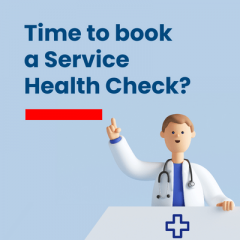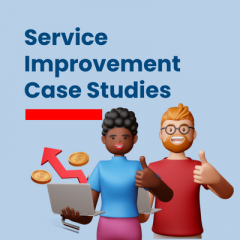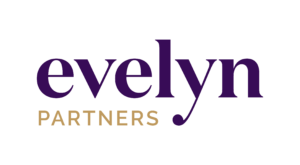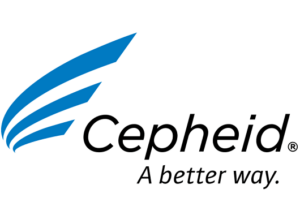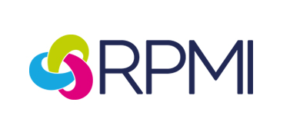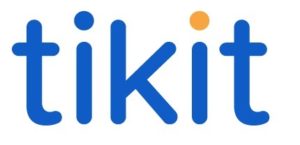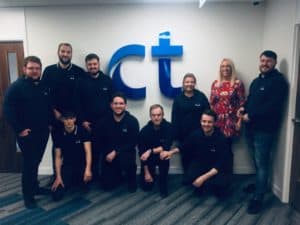
What was your driver for implementing self service?
The driver for implementing self service was to cut down the request calls which were coming into the service desk, particularly the ones where the desk weren’t adding any value. We were getting a lot of service requests which we had to check to make sure correct forms were attached, and then we were forwarding these requests on to resolving groups, which was an inefficient use of our time.
A lot of thought, preparation and hard work helped to build the automated service where users can request hardware and software. The self service capability specifies the required information for submission, and will inform the customer if it is filled out wrong. This saves time for both the service desk and customer, as previously the process was very long, and incorrectly filled out forms could go from person to person until they were redirected to the original customer to be re-done.
Who did you work with within the business to implement the self-service?
It was driven from the service desk itself. We wanted it to benefit us, but we also knew that it would make the customers lives easier as well. We looked through the ticket system, saw who would benefit most from the change to self service. These were identified as the users who put in the most requests, who we call our frequent flyers. We then spoke to them about the new automated option. They agreed that they would find it useful and shortly after that we asked them what was important and what would have the most positive impact on them.
When designing, we presented it to the frequent flyers to find out what was working, what needed to be changed, and ultimately find out if they would use it. The frequent flyers were involved from the start of development to ensure that the self-service system was an accurate representation of their needs.
How long did the project take?
The project took 9 months. We were also doing an upgrade to the ITSM tool, which delayed the project slightly. However, most of those 9 months were taken up with writing the automation, understanding what our customers needed and getting that strong understanding of how they used the system and what they therefore wanted from it. Then, we sat down with supplier and wrote automation routines. We automated our change management system at the same time. This allowed us to speed up the change process and move to virtual CAB meetings, which happen within the tool rather than all having to meet up at a specific time to discuss.
What hurdles did you face? And how did you overcome them?
Getting the customers to talk about what they wanted to do wasn’t too bad. We used our key frequent flyers. They were competent, intelligent and helped us resolve issues.
We didn’t really have any big hurdles. This is because rigorous preparation was undertaken to prevent them from happening. The key thing was to get the initial work with the customers done; finding out what they do and don’t use, the aspects which they find problematic and how it can be improved and benefit the overall customer experience.
How did you market the service?
We marketed the service with our Intranet. We put out weekly posts in the form of memes to engage with our customers throughout the entire process. The frequent flyers spreading the word within their user communities’ and engagement with the memes helped to spread the word of the change to self service. This awareness helped to increase the engagement of customers when implementing the self service. We started marketing it 6 weeks before it went live. Using memes and having more of a modern approach helped to generate a lot of attention. We also had a competition once self-service went live to entice customers to use it. Everyone who used FirstPoint during September was entered into a prize draw to win £25 worth of M&S vouchers and a puffin.
Examples of how the self-service was marketed can be found below:

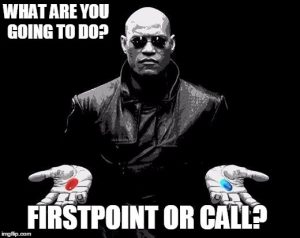
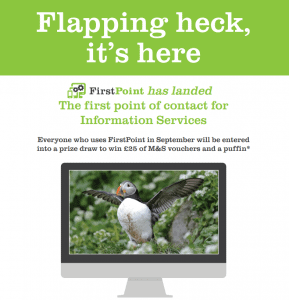
How did you monitor its success?
We aimed to get a 30% channel shift from emails and phone calls to self service within the first year. We hit that within three months. This was partly due to us consistently encouraging customers to use it. For example, if they had been waiting a while to get through on the phone, when we were talking to them to resolve the issue we would tell them they could have raised this on the self service. We would offer to show them how to get onto the portal and raise the ticket, or if they called with a hardware or software request we would say that they could only raise that request through portal. This month we achieved 45% on portal, bringing email down to 15% and phone down to 40%. We are now in discussion about how we can incorporate the success of this into other areas of the business, such as HR and Finance.
What would your key tips for other service desks be?
It’s vital to talk to your customers first. Make sure you find out who the key customers are and understand how they want to use the service. Once you identify and engage your key users, you can find out how to make their lives easier and better by making them part of the process. If they help to create it they will be more inclined to use it and promote it with their peers. Additionally, it is important to always stay connected. Make sure you are in discussion and that everyone is informed. This includes putting new pieces of information out every week, describing how things will work, what potential issues or benefits there are, etc. Updating and educating people regularly helps to prevent user error and save time.
We’re now in the process of identifying customers that aren’t using the portal, going back to them and asking what puts them off using it. By finding out what they don’t like or understand, we can then discover how we can help and encourage them to use it. This will help us to increase portal adoption rate and identify any additional problems. We aim to do this by discovering why customers aren’t using it, what would make it easier for them and therefore what the main problem is. This will help change the habits that are preventing customers using it more.
Head of Service Management: Mark Bassett
Business Type: Charity
Location of Service Desk: North East London
Size of team: 12 on Service Desk – alongside some apprentices
Days and hours of operation: 7am – 6pm
Number of customers supported: 8500
Calls received per day: 5500 a month – in July there was 256 point of contact a day through email, phone & portal







